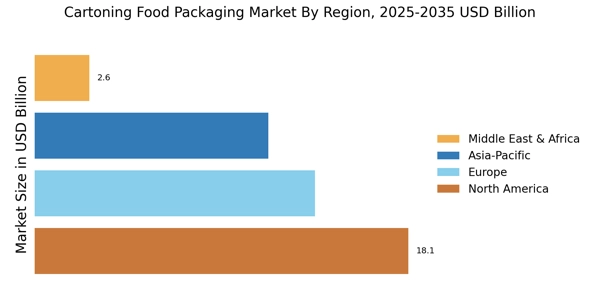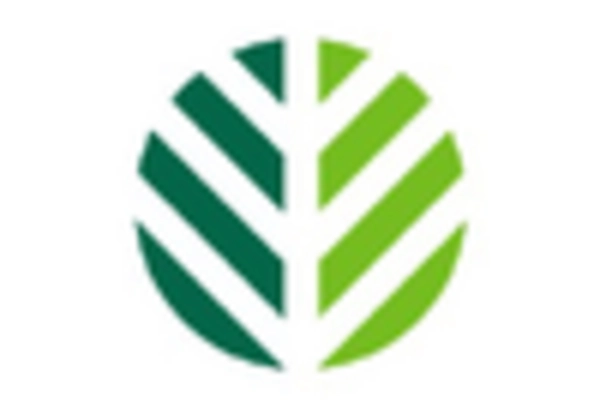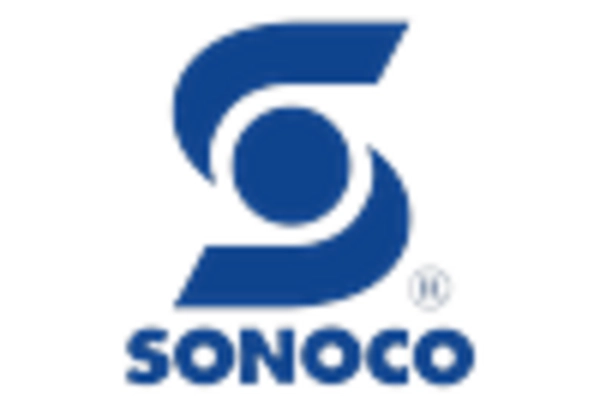Regulatory Compliance and Food Safety Standards
Regulatory compliance is a critical driver in the Cartoning Food Packaging Market, as food safety standards become increasingly stringent. Governments and regulatory bodies are implementing more rigorous guidelines to ensure that food packaging materials are safe and do not pose health risks. This has led to a heightened focus on the selection of materials and production processes that comply with these regulations. Companies that prioritize compliance are likely to gain a competitive advantage, as consumers are becoming more aware of food safety issues. The market is projected to see a steady increase in demand for compliant packaging solutions, which will further propel growth in the Cartoning Food Packaging Market. Adhering to these standards not only protects consumers but also enhances brand reputation.
Technological Innovations in Packaging Machinery
Technological advancements are playing a crucial role in shaping the Cartoning Food Packaging Market. The introduction of automated packaging machinery has enhanced efficiency and reduced labor costs for manufacturers. Innovations such as smart packaging technologies, which incorporate sensors and QR codes, are becoming increasingly prevalent. These technologies not only improve the user experience but also provide valuable data for supply chain management. The market for packaging machinery is expected to witness a growth rate of approximately 6% annually, driven by these technological innovations. As companies adopt more sophisticated machinery, they can achieve higher production rates and better quality control, thereby enhancing their competitive edge in the Cartoning Food Packaging Market.
Rising Demand for Sustainable Packaging Solutions
The Cartoning Food Packaging Market is experiencing a notable shift towards sustainable packaging solutions. As consumers become increasingly environmentally conscious, there is a growing demand for packaging that minimizes waste and utilizes recyclable materials. This trend is reflected in the market, where the use of biodegradable and compostable materials is on the rise. According to recent data, the sustainable packaging segment is projected to grow at a compound annual growth rate of over 10% in the coming years. Companies are investing in innovative designs that not only meet regulatory requirements but also appeal to eco-conscious consumers. This shift towards sustainability is likely to drive growth in the Cartoning Food Packaging Market, as businesses seek to align their products with consumer values and environmental standards.
Growth of E-commerce and Online Food Delivery Services
The Cartoning Food Packaging Market is witnessing a surge in demand driven by the growth of e-commerce and online food delivery services. As more consumers turn to online platforms for their food purchases, the need for effective packaging solutions that ensure product integrity during transit has become paramount. This trend is reflected in the increasing sales of packaged food products, which are expected to rise by approximately 7% annually. Companies are investing in durable and protective cartoning solutions that can withstand the rigors of shipping while maintaining product quality. This shift towards e-commerce is likely to continue influencing the Cartoning Food Packaging Market, as businesses adapt their packaging strategies to meet the evolving needs of consumers.
Consumer Preference for Convenience and Ready-to-Eat Products
The Cartoning Food Packaging Market is significantly influenced by changing consumer preferences, particularly the demand for convenience and ready-to-eat products. As lifestyles become busier, consumers are increasingly seeking packaging solutions that offer ease of use and portability. This trend is evident in the rise of single-serve and on-the-go packaging options, which cater to the needs of modern consumers. Market data indicates that the ready-to-eat food segment is expected to grow by over 8% annually, further driving the demand for innovative cartoning solutions. Manufacturers are responding by developing packaging that not only preserves product freshness but also enhances convenience, thereby positioning themselves favorably within the Cartoning Food Packaging Market.


















Leave a Comment